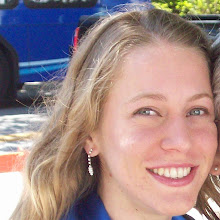
On a small plot of land in the Fontainbleau Forest, there rests a Cyclopes. The eye of this sculpture moves, as does its giant ear. In fact, this is more than a sculpture. It's now a museum, and it's also a large toy. The tongue of this mirror-covered creature is a water slide. The inner-workings, which resemble its brain, work and turn. It's like a giant version of the board game Mousetrap. There is even what resembles an enormous pinball machine. Large metal balls follow a track when put into movement.
My professor only discovered this hidden art this year. The monstrous museum is only open about four months a year, so we got lucky. It's not well-known and hasn't seen many visitors. We requested a visit after Gayle told us about it, so she rented a bus for the hour trek outside Paris. I don't think I could convince you how cool this was!

The Swiss sculptor Jean Tinguely secretly began the 22.5-meter creature in 1969. His wife Niki and over 15 other artists built the statue with scrap metal. You can see where many artists left their marks with small art within Le Cyclop.
Reluctantly, they turned it over to the French state in 1987 so that it could be preserved. It was declared complete in 1994. The Cyclopes took over 20 years to mature. It's a product of New Surrealism.
On the top back, next to a reflection pool on the roof, there is a two-ton train car jutting out. It represents the carriages used to transport people to concentration camps during the Holocaust. It symbolically leads to nowhere.
French Fact: France is not a federalist country like America, which has state and federal laws. France does not have any regional laws, only national laws. Mayors do have power to make minor laws.
My professor only discovered this hidden art this year. The monstrous museum is only open about four months a year, so we got lucky. It's not well-known and hasn't seen many visitors. We requested a visit after Gayle told us about it, so she rented a bus for the hour trek outside Paris. I don't think I could convince you how cool this was!

The Swiss sculptor Jean Tinguely secretly began the 22.5-meter creature in 1969. His wife Niki and over 15 other artists built the statue with scrap metal. You can see where many artists left their marks with small art within Le Cyclop.
Reluctantly, they turned it over to the French state in 1987 so that it could be preserved. It was declared complete in 1994. The Cyclopes took over 20 years to mature. It's a product of New Surrealism.
On the top back, next to a reflection pool on the roof, there is a two-ton train car jutting out. It represents the carriages used to transport people to concentration camps during the Holocaust. It symbolically leads to nowhere.
French Fact: France is not a federalist country like America, which has state and federal laws. France does not have any regional laws, only national laws. Mayors do have power to make minor laws.








